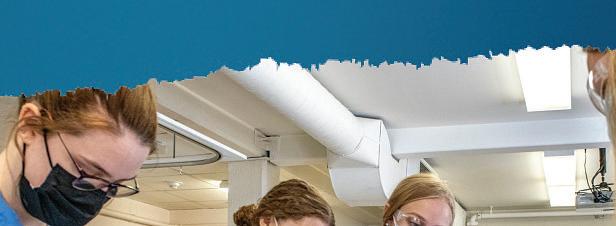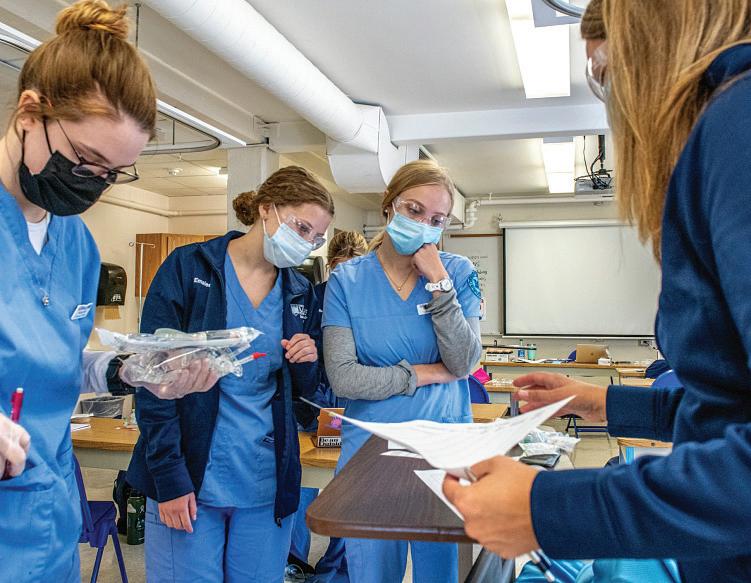In Celebration of National Nurses Week





COMPASSION KNOWLEDGE DEDICATION






A Special Advertising Section of the Bangor Daily News Friday, May 9, 2025


In Celebration of National Nurses Week











A Special Advertising Section of the Bangor Daily News Friday, May 9, 2025

BY ANNE GABBIANELLI
Maine schools are working to meet an increasing demand for more nurses in our communities, developing accelerated programs to help students earn their degree faster and get into the workforce sooner.

“Our current nurses are reaching retirement age, so the demand for nurses will increase for at least the next decade,” said Nicole Chadwick, RN, MSN, CPHQ. Chadwick is the Vice President of Education and Preparedness with Northern Light Mayo and CA Dean Hospitals. Because of the growing demand for nurses, accelerated nursing studies have become a draw these days allowing graduates to begin their career sooner.
“What’s unique about these accelerated programs is the combination of clinical studies and hands-on training,” Chadwick said. “Many of these new nurses have experience in another field or in learning environments that they bring with them into their new nursing career.”
The Accelerated Baccalaureate in Science of Nursing (ABSN) program began in Maine in 2002 at the University of Southern Maine (USM). Brenda Petersen, PhD, RN, APN, C., CPNP-PC, is the Associate Dean of Nursing and Associate Professor in the School of Nursing there. She said it’s a venue that is not for everyone because it’s designed for “those who are highly motivated and can handle an intensive learning environment, and anyone looking for a fast and effective way to transition into nursing as a new career.”
The USM curriculum is designed for individuals who already hold a bachelor’s degree in another field but want to transition into nursing.
“This rigorous, fast-paced program allows students to earn a Bachelor of Science in Nursing (BSN) in about 15 months, compared to the traditional four-year program,” Petersen said.
Any accelerated learning in the nursing field brings challenges because it’s intensive, rigorous, demanding, fast-paced, comprehensive — and more.
“We would never want to dissuade anyone from pursuing their dream of becoming a nurse — but being successful in an accelerated nursing program requires dedication, sacrifice, maturity, excellent time management skills, accountability, and perseverance,” said Elizabeth Mann RN, M.S.N., PHNA, with the University of New England (UNE). UNE first offered an accelerated BSN program in 2012, on a 16-month track. That is now a 12-month format.
Mann, the Assistant Clinical Professor/ABSN Program Coordinator, added, “Prospective students who are researching accelerated programs and narrowing their focus to 12-month programs, are generally aware of the rigor of such a program. That being said, we counsel them to approach their studies like a full-time job, as they will be either in the classroom, in clinical, or preparing for both for much of their week.”








“The requirements of the curriculum are the exact same as a traditional, four-year program,” Mann said. “Students must pass a predetermined number of prerequisite science courses to be admitted into the ABSN, and they will have to pass a national exam (just like a traditional four-year student) to officially become a nurse. Nothing is cut back from the curriculum in the accelerated nursing program.”
She noted, however, “I think it’s more about whether it’s the right time in someone’s life, rather than the right format.”
Husson University offers a three-year program.
“You need to have good work-life-school balance to go to nursing school yearround as it is a full-time load through three semesters (spring, summer, and fall),” said Valerie Sauda, PhD, GERO-BC™, CNE.
As Husson’s Chief Nurse Administrator/Undergraduate Director/Associate Professor, Sauda said, “For the workplace, the accelerated program allows there to be more newer nurses available at a time of shortage. But it may also demand more professional development time and resources for new graduate nurses to develop professional skills and the all-important nursing management skills.”
Sauda continued, “As nursing is a fast-paced and often demanding career pathway, taking the time to meet your own learning needs is critical to your long-term success and may require you to take it a bit slower to be successful.”
Gillian Corcoran, RN, at Northern Light Mercy Hospital, is a former Mechanical Engineer now working on the Cardiac Telemetry floor at Mercy Hospital.
“I just wanted to feel like I went to work every day and did something that helped and made me feel good, so I took some pre-reqs while I was working and then I went to nursing school,” she said.
Corcoran received her nursing degree through the 15-month program at USM.
“My goal was to earn my degree as efficiently as possible, and an accelerated program met all of my needs. It allowed me to complete my education quickly and get back to work. As a fast-paced person, I knew it would be a great fit.”
She said her rigorous program included clinical rotations in a hospital setting which provided invaluable hands-on experience.
“While adjusting to 12-hour shifts and direct patient care, the exposure to different hospital departments helped prepare me as much as possible for the realities of the job,” Corcoran said.
Once she started at Mercy Hospital, the support was tremendous, she said. “They start you off with one or two [patients], learn how to do all the charting, learn how to do your assessments in your own way, and then build from there. It’s progressive.”
Corcoran advised, “Be realistic about your ability to commit time and effort, considering everything else going on in your life, be kind to yourself because it’s not about being perfect; it’s about learning. You’ll continue to grow on the job, and it’s okay to ask for help when needed.”
There is support said Chadwick through a Nurse Residency program.
“It’s for all new graduate nurses, which is in addition to their precepted time on the floor. This offers continued education and simulation training with other new nurse graduates and gives them an avenue to learn skills in a less pressured environment.”
“Nurse educators and healthcare managers are in constant communication about changing education needs,” Chadwick said. “I think continuing open discussions with educators ensures that nurses are not faced with ‘reality shock’ when they get their first nursing position.”
As more institutions are offering fast track education, the future is evolving.
“I expect we will continue to adapt to the changing nature of nursing education as we prepare nurses to work in new ways,” Sauda said, “including through telemedicine and use of AI in practice settings.”

BY JEN LYNDS
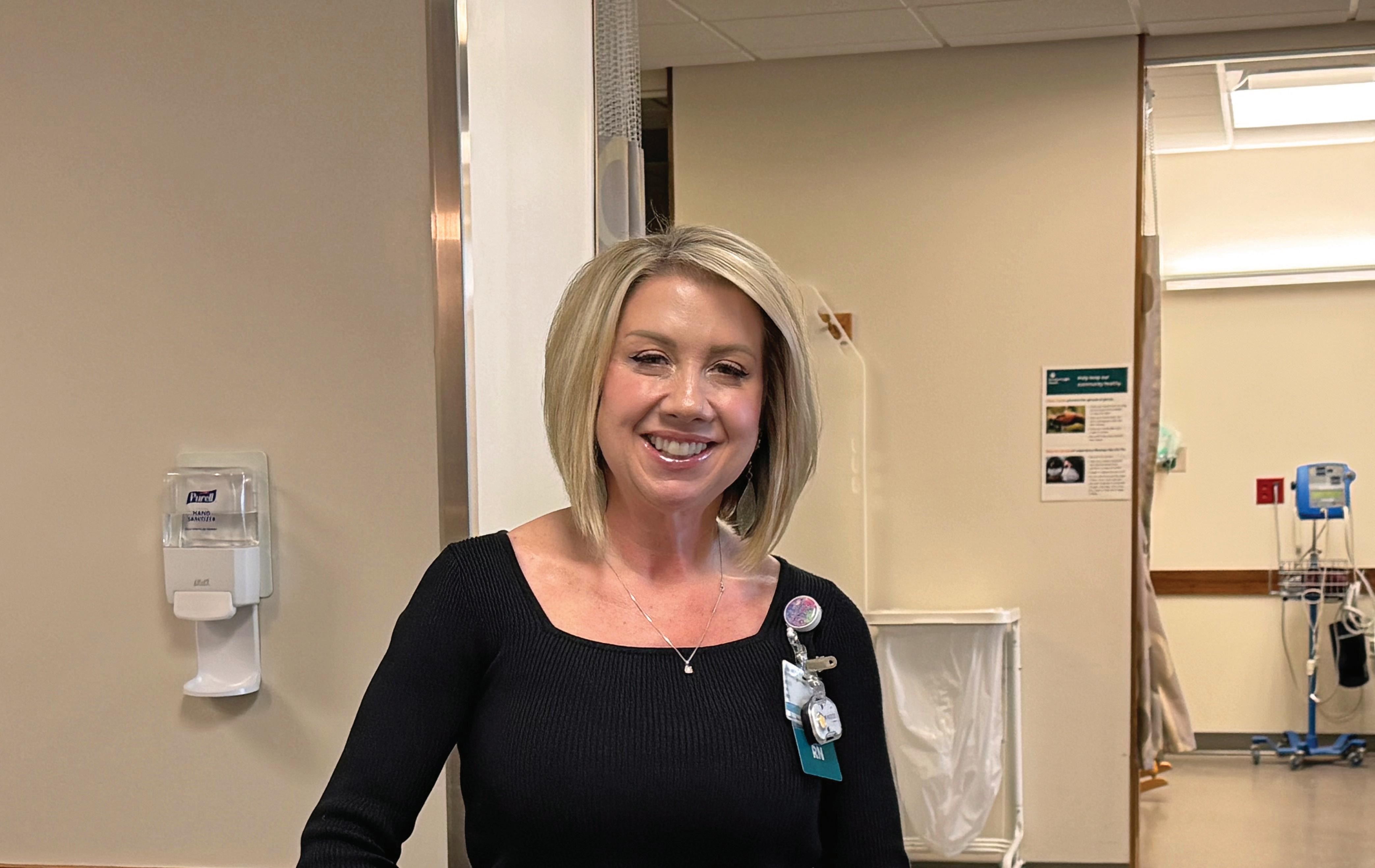
Kate Hutchins has served as a registered nurse at Northern Light Eastern Maine Medical Center for 22 years, attending to the needs of thousands of patients in the Bangor hospital.
She moved throughout the facility, beginning in the Medical/Surgical Unit and culminating in the Emergency Department, where she spent most of her career. She was searching for the next challenge when a loved one confronted the battle of their life: cancer. Kate knew it was time for a change. She joined the team at Lafayette Family Cancer Institute in Brewer, and spent two years providing chemotherapy/ immunotherapy treatment and in the triage role.
That family member’s “strength and resilience” became a “life-altering experience” for Hutchins.
“I just felt like I needed to honor [my loved one] by helping others who are going through a similar experience,” Hutchins said. “I wanted to make sure that everyone who had to go through this disease was cared for and guided during this difficult time in their life.”
This experience prompted Hutchins to become a nurse navigator for patients with head and neck cancer, a role she has held for the past two years. Oncology nurse navigators possess diverse skills in the cancer care field. Trained in specialized
oncology knowledge to ease the complexities of the cancer journey for patients and their families, they offer support and help coordinate care. The Oncology Nurse Navigator Program at Northern Light Cancer Care was launched with the help of gifts from the community made through Northern Light Health Foundation.
Hutchins acknowledged that managing the healthcare system is daunting for patients. Nurse navigators try to simplify this path.
“We try to break down barriers, whether they are financial, logistical, or a combination of obstacles,” she explained. “We want to make it easier for the patient to get here and get their needs met.”
Easing the journey means ensuring patients receive timely appointments, are educated about their diagnosis and treatment, and have all necessary medical documents readied for specialist visits.
“Along with myself, we have a breast navigator, a lung navigator, and our survivorship navigator,” she said. “In total, four nurse navigators connect with the patient before they even get to the cancer center to [ensure] they receive the appropriate pre-visit testing/ imaging prior to their new patient consult. Without having these results in place, our physicians could not complete a treatment plan.”
She noted that many patients being treated for head and neck cancer need dental clearance before they can receive radiation treatment, which is difficult to obtain if the patient does not already have a dentist.
“We collaborate closely with a few dental providers, who help us secure dental clearances,” she said. “I ensure that their imaging and correct biopsies are done before their consultation.”
Imaging was a barrier in the past, Hutchins noted. Patients need magnetic resonance imaging (MRI), positive emission tomography (PET) scans, and other tests to determine the stages of cancer, and ascertain the effects of treatment.
Northern Light Cancer Care expanded access to PET/CT onsite in Brewer. Since opening appointments in October 2024, more than 340 patients have received a PET/CT scan within the mobile unit.
“Getting the mobile unit has been wonderful,” Hutchins said. “Accessing that machine in Brewer means getting our patients treated sooner.”
Hutchins said that all patients with cancer deserve a patient navigator.
Oncology nurse navigators provide tailored education about their disease, treatment options, and resources to help patients through treatment. Navigators help bridge communication between the patient and their healthcare team.
“This work gives us a more personal experience with the patient, improving the patient experience, helping with treatment compliance, and contributing to better health outcomes,” she said. “I get to share my knowledge with the patient and better serve them by providing the support they were seeking. That helps in healing. It works.”
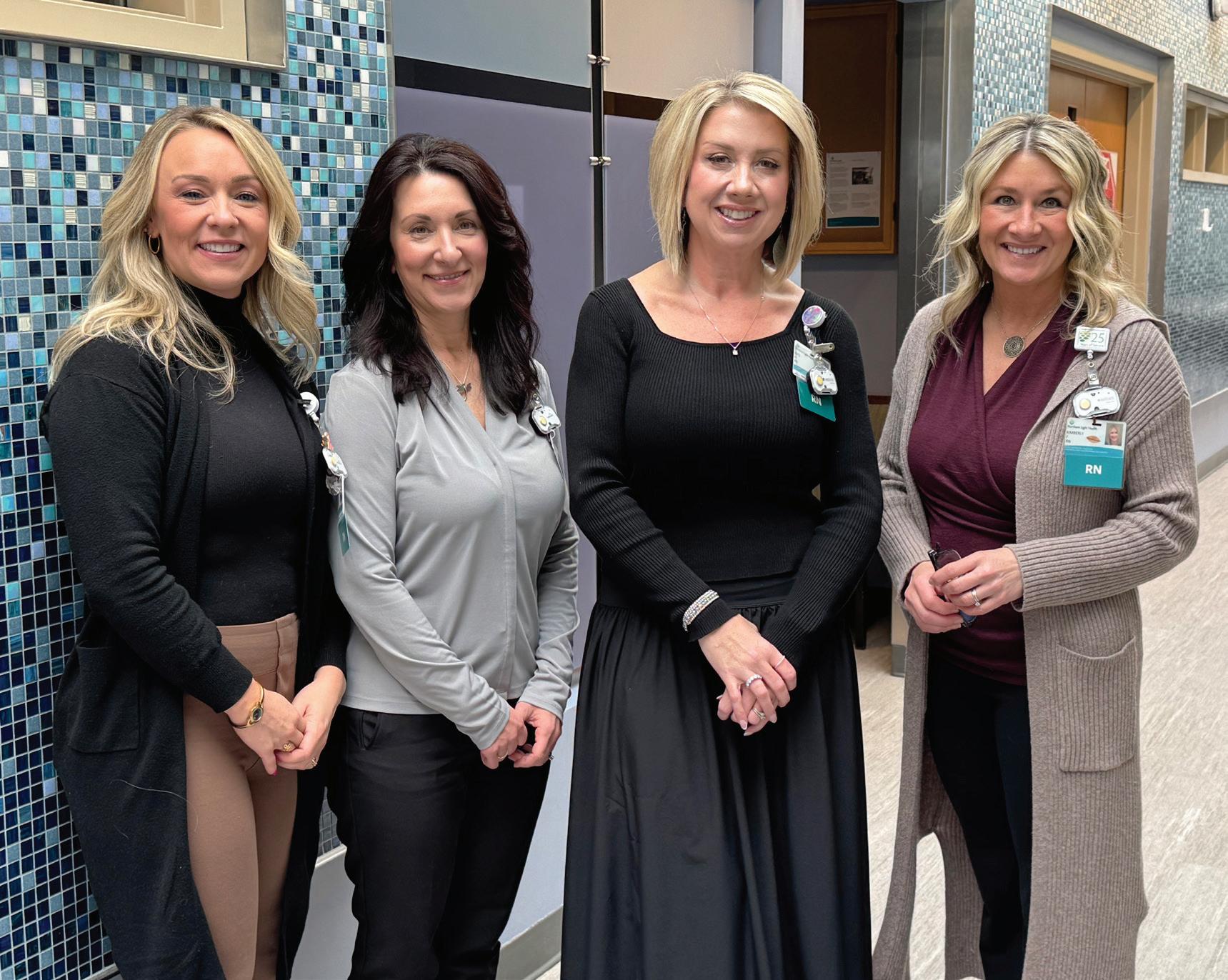


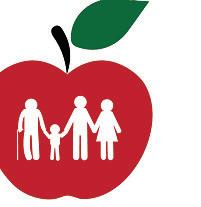
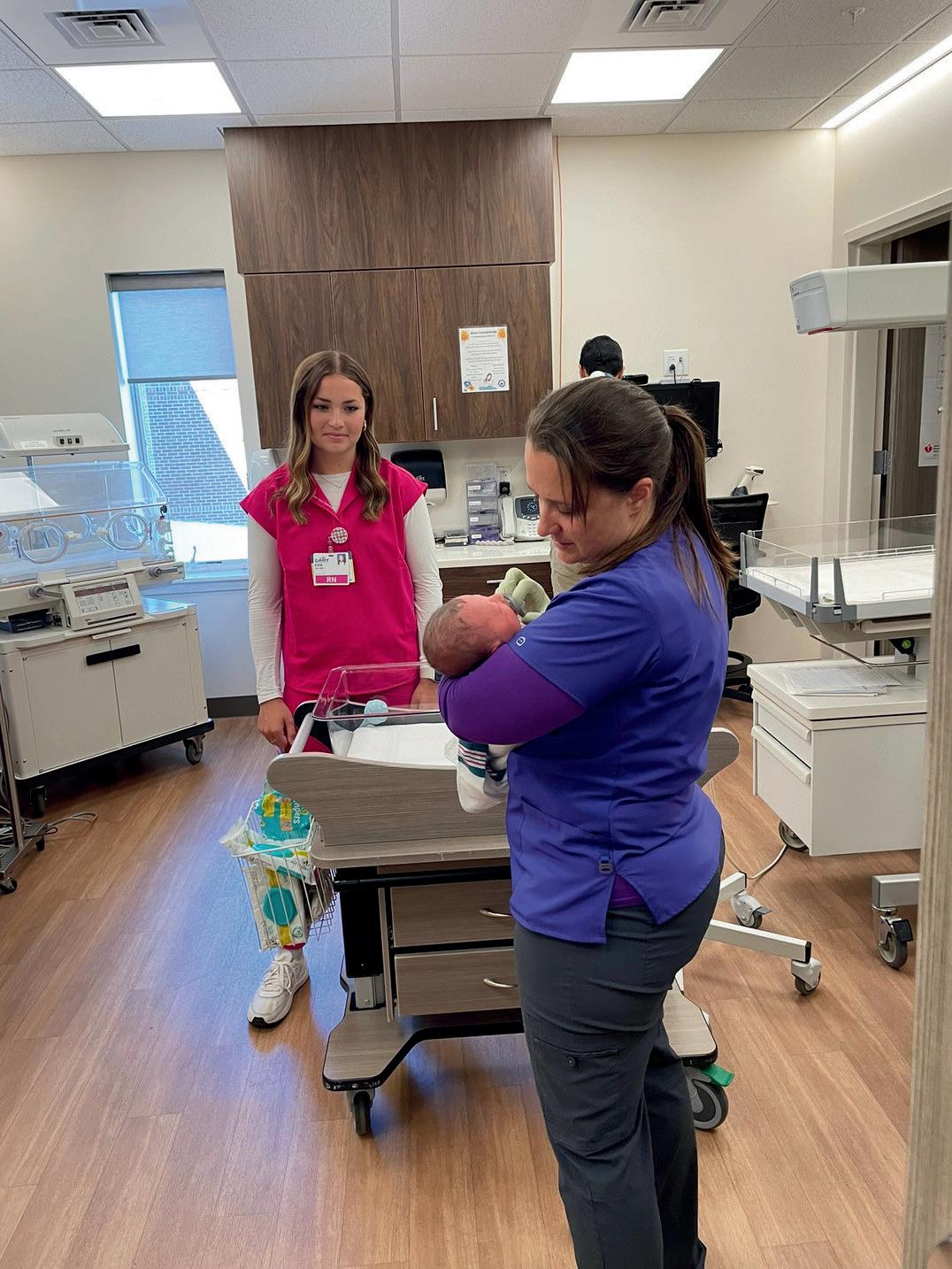
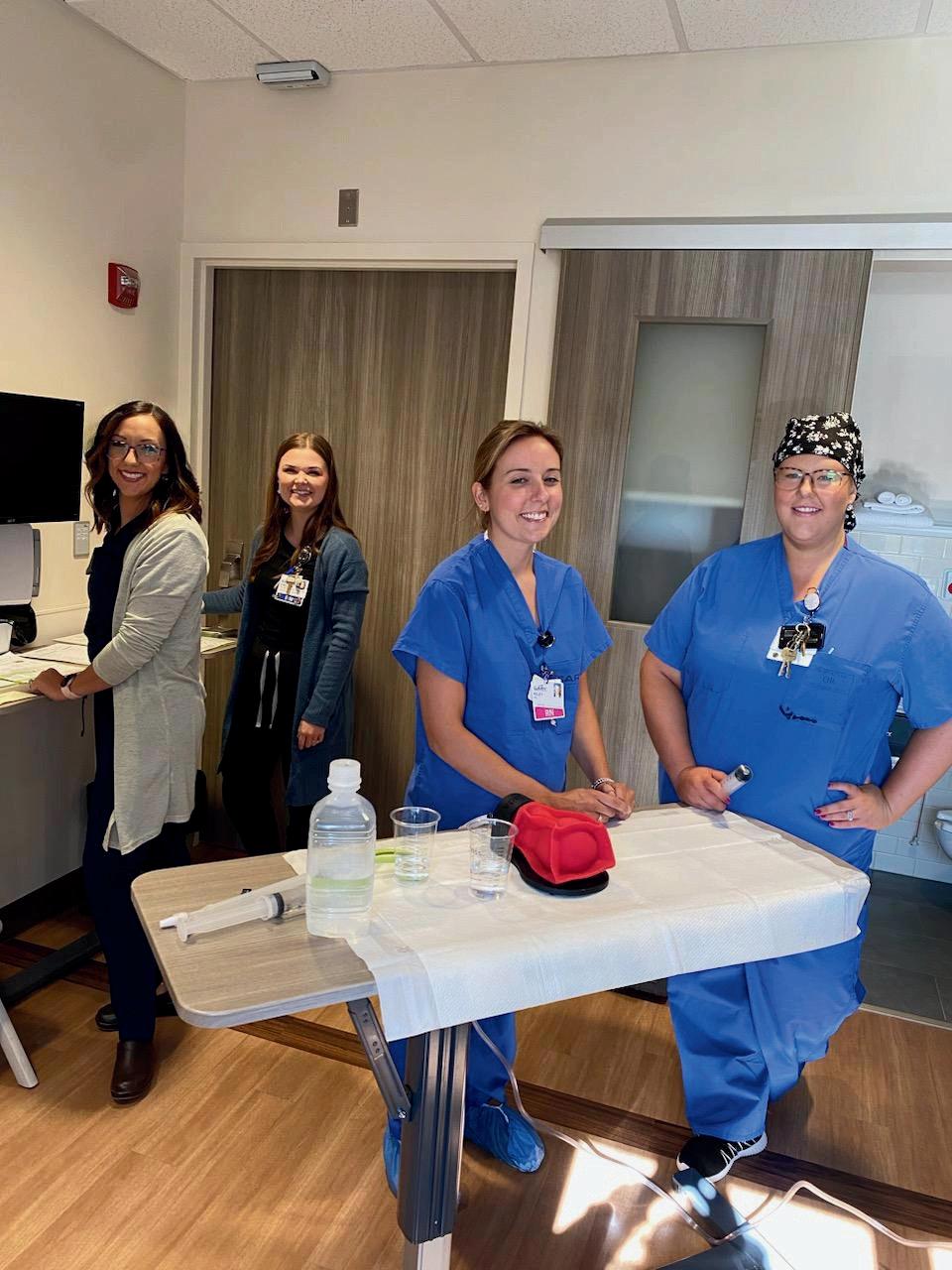
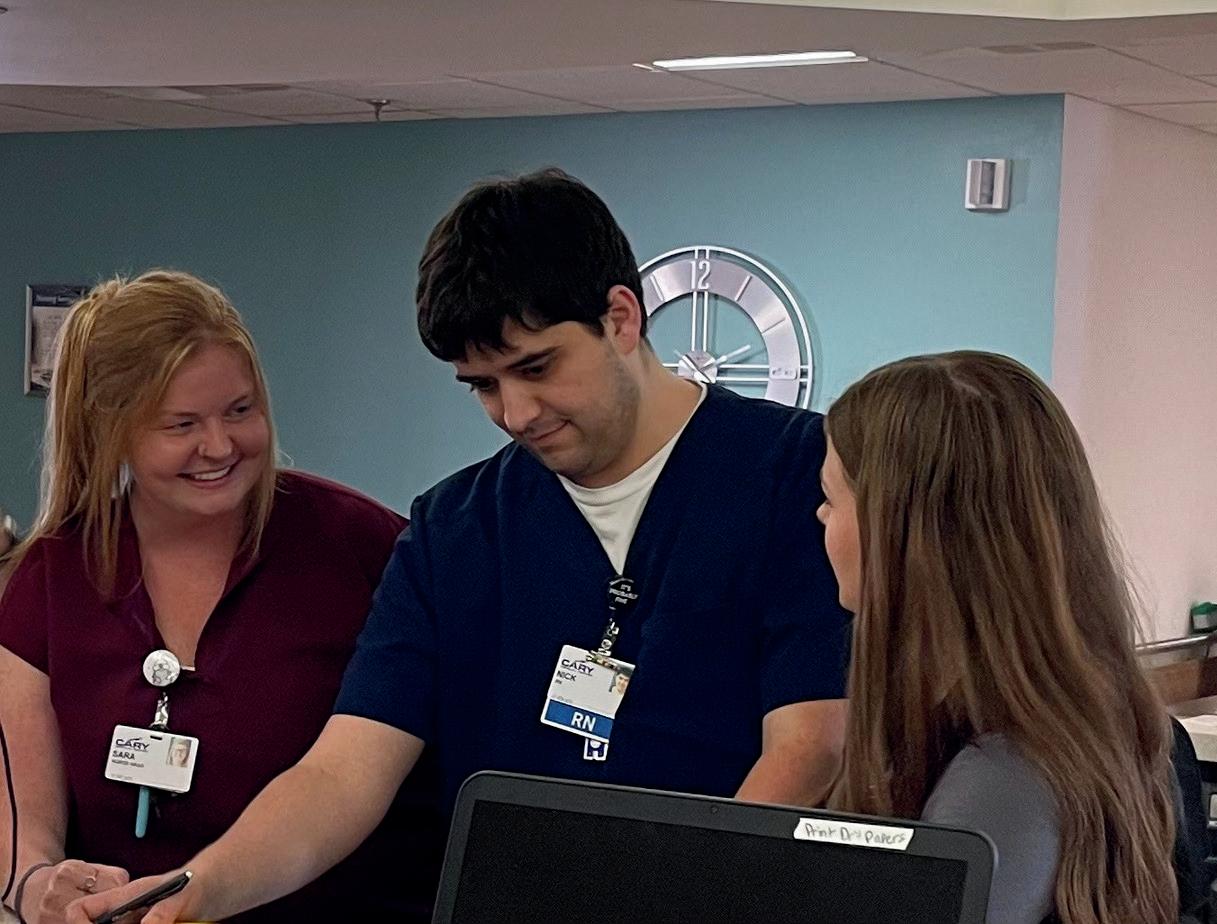
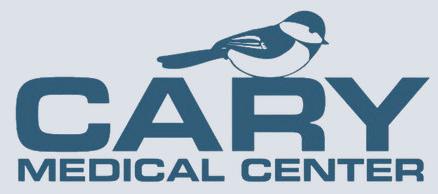

BY ANNE GABBIANELLI

The future is wide open to nurses who are retiring. For those who feel the financial tug to keep working but want to change their environment, the opportunities are endless. Many jobs like nurse educator, medical writer, insurance nurse, clinical research coordinator, telehealth nurse, consultant, and more are available for that next chapter in nursing.
And still, after long and successful careers, many retired nurses stay on per diem. That’s the case for school nurse Barbara Carter, RN. She retired nine years ago from RSU 22 but often finds herself helping out.
“I still fill in when another school nurse needs some time off,” Carter said. “I did work nearly full-time during the pandemic responding to the call for staffing needs at a local elementary school and worked at the Northern Light vaccine clinic at the Cross Center.”
In between subbing as a school nurse and caring for family members, Carter is still making time for fun in her retirement.
“I took classes at the Y and have a gym membership, have taken dance classes, keep up with friends, and recently started to crochet,” she said.
In Carter’s “spare time” as she calls it, she tends to her aging mother-inlaw’s needs.
Since the U.S. Census Bureau has declared Maine the oldest state, caregivers are in demand, and that’s where many healthcare retirees like Carter and others find themselves. A recent survey by AARP found that 85 percent of adults 65 and older said they want to age in place in their own home. It seems to be a natural
progression for the “family nurse” to morph into the caregiver for their parents, inlaws, or even spouses using their professional skills and supportive talents.
Mary Goodman, BSN, RN, of Winterport retired a number of years ago and hit the road in a camper with her husband and dog. More recently, her retirement has involved sharing her nurturing skills.
“Raising a 16-year-old and my social life has reverted to soccer grandma, chauffeur, ski team cheerleader, track team follower, teaching driving lessons, and so much more.” In between her “on-the-go” routine, “I also volunteer for the American Red Cross a few times monthly as a blood donor ambassador and enjoy an abundance of family gatherings now.”
Carole West of Orono spent the majority of her nursing career in Critical Care, Intensive Care, and Pediatric Intensive Care. She retired a year ago and admits her fear.
“I was fearful of retirement because I don’t have many hobbies and I worried about finances,” West said. “The expression ‘You have to retire to something rather than retire from something,’ made me wonder what was I going to retire to? I had so much anxiety. In the end, I have been helping several family members and friends who have been ill. I am a strong patient advocate and know that critical assessment skills alleviate bad outcomes and save lives.”
One more thing West wanted to do was “pay it forward,” and so now she is a hospice volunteer which presents a new set of challenges when meeting with patients.
“Memory patients who are nonverbal have me wondering if I am doing anything for them, yet I am told, just being there for them is worthy,” West said. “In addition, I have to stop thinking like a nurse as I am no longer in any assessment role, which I do miss. Finally, I remain a good listener even though my role doesn’t require offering advice.”
West said her new role as a hospice volunteer is rewarding.
“Seeing the patient smile and thanking me for visiting is fulfilling.”


































The stress associated with the nursing profession has been well documented.
A 2022 study published in the journal BMC Nursing found that job stress not only has an adverse effect on nurses’ health, but also may reduce performance and quality of care, potentially affecting the outcome of patients.
There’s no denying nurses have a lot of weight on their shoulders. That reality underscores the importance of letting nurses know how much they’re appreciated. Consider these ideas to honor local nurses.
A community-wide campaign to support a charity that benefits nurses or causes important to nurses can be a great way to thank them for all they do. Various domestic and international organizations are linked to the nursing profession. Prior to introducing a campaign, community leaders can speak with local nurses to see if there is any specific charity or cause important to them. Some charities may provide job training in communities where nursing shortages have made it hard for locals to access quality health care, while others may finance health care operations, including staffing of nurses, in underprivileged countries.
Parades, high school sporting events, holiday tree lighting ceremonies, and other community-centric events draw large crowds. That makes these events the perfect time to honor local nurses and emphasize all the work they do to help their neighbors. Community dignitaries like a mayor or local police chief can explain who the honoree is once the crowd gathers.
The American Nurses Association noted that nurses were forced to reuse masks or purchase their own safety equipment during the peak of the COVID19 pandemic. Communities that want to express their appreciation for nurses can support efforts to ensure working conditions are safe for nurses and that nurses don’t need to reach into their own pockets in an effort to avoid illness.
One of the most effective ways to honor local nurses is to take a little off their professional plate. Community leaders can urge residents to get their annual flu shots and update other vaccinations in an effort to keep hospital admissions low, which in turn makes nurses’ jobs easier.
Nurses are worthy of praise. Communities can do much to show these invaluable health care professionals how much their efforts and sacrifices are appreciated.




Few likely forget scenes that emerged during the early days of the COVID-19 pandemic when nurses working in hospitals overwhelmed with sick and dying patients were applauded by local residents. Such public expressions of appreciation were a testament to the sacrifices and risks nurses accepted as COVID claimed more and more lives.
In those early days of the pandemic, nurses worked especially long hours, and even though the pandemic is now over, nurses continue to work considerably longer workdays than the average profession. The American Nurses Association notes that 12-hour shifts are the standard for many nurses working in hospital settings. The lengthy, often exhausting shifts worked by nurses are another example of their devotion to their patients, as the ANA notes one of the reasons nursing shifts are so long is to ensure better continuity of care for patients. With just two shift changes per day, hospitals reduce patient handoffs, and the ANA notes that decreases the risk

for miscommunication or misunderstandings that could compromise patient care and health.
Though 12-hour shifts are the norm for nurses working in hospitals, the ANA notes that such schedules can have drawbacks, and those can adversely affect nurses. Fatigue from 12-hour shifts, which can and often do last longer than 12 hours thanks to paperwork and additional tasks nurses may not be able to get to during ordinary working hours, can lead to burnout. In addition, nurses typically have limited downtime on workdays, which means they have few hours to spend with family and friends on days when they work. And nurses working 12-hour shifts may find they spend a significant portion of their time off recuperating from their long shifts, which can adversely affect their overall quality of life.


Twelve-hour shifts are another example of the selfless commitment exhibited by nurses working in hospital settings.
